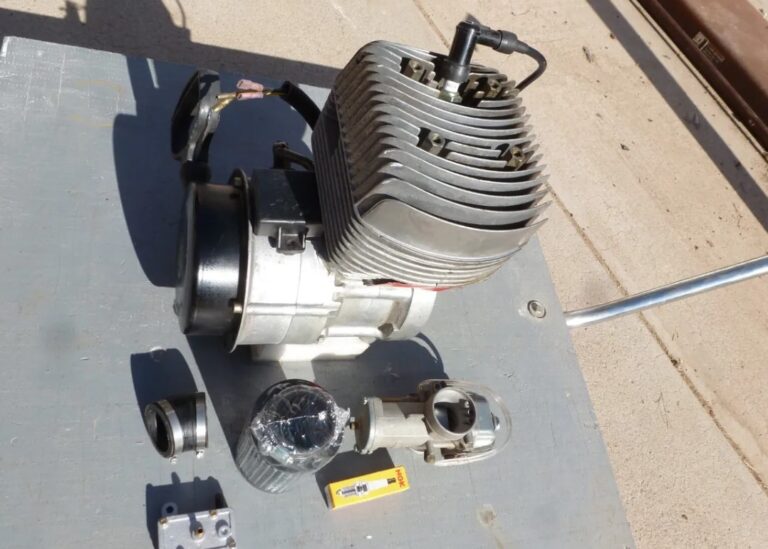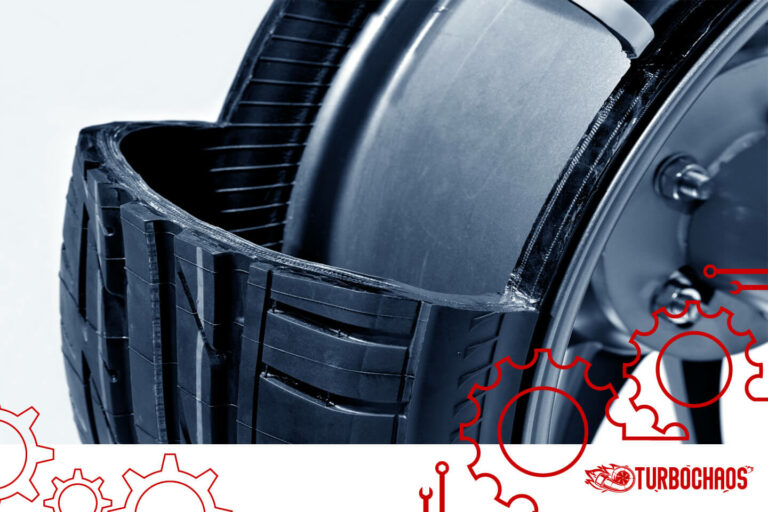Can A Jet Ski Sink? All You Need To Know
Flipping over is less of a concern nowadays because jet skis are considerably bigger than they used to be, unless you’re being careless or the Jet Ski is damaged. Read down below if you want to know Can A Jet Ski Sink?
Jet skiing is an exhilarating, heart-pounding water sport that is enjoyable and excellent exercise, so you may desire one.
If you intend to buy a jet ski, you should know how to maintain it and the potential causes of the sinking.
The main reason for a Jet Ski sinking is a lack of or damaged drain plugs.
Other factors that cause damage to your watercraft include:
- Collisions.
- Riding your jet ski frequently in shallow water.
- Employing the wrong towing technique.
- Inadequate Jet Ski maintenance.
- Purposeful maltreatment.
- Leaving your jet ski in the water for too long.
Even if we are aware of the primary causes of Jet Ski sinking, many factors remain to consider, such as the initial cause of how missing drain plugs might cause your watercraft to capsize.
Let’s take a closer look at jet skis to help you understand why they sink, how to avoid them from sinking, and what to do if they do.
Can A Jet Ski Sink?
Jet skis can sink, but not completely, because flotation foam is integrated into the hulls of these vehicles. Therefore, the bow will float even if the Jet Ski fills with water. Your jet ski, however, could sustain various damages if a sizable volume of water leaked through the hull.

Will A Jet Ski Sink Completely?
A Jet Ski will sink, but because many models have foam flotation in the nose, the Jet Ski’s nose won’t sink entirely. Contrary to popular belief, the foam in a jet ski does not keep it afloat when the conditions are regular.

The only reason a jet ski has foam inserts in the front is so it won’t fully sink if it absorbs water. The foam is in the nose because the rear of the Jet Ski carries the bulk of the weight; if the foam were in the front, the Jet Ski would resemble a buoy that could be hauled back to shore using the bow hook.
Does Sinking A Jet Ski Ruin It?
It’s not the end of the world if a jet ski sinks; it can often be salvaged, though it won’t be inexpensive. You should read this article if the Jet Ski were just turned over.
This would be a good opportunity to incorporate your Jet Ski insurance if you have it.
If your jet ski sank and the water rose above the engine, drain the water from the engine.
If it’s seawater, it must be taken out as soon as possible. It’s preferable to delegate this to the dealership or repair facility.

Your jet ski can require multiple oil changes, so it costs more money to remove all the water.
A buried jet ski should not be attempted to start since the engine’s water will harm the pistons, cranks, and other engine components.
Unlike air, water does not compress, and powerful starter motors!
Why Would A Jet Ski Sink?
The most frequent cause of a Jet Ski sinking is the absence of drain plugs. Double-check your drain plugs before launching your jet ski into the water.
Drain plugs are separate from flush ports; they are located at the lowest point and come in one or two sets.
A jet ski may absorb water due to a broken hull, faulty screw, or connection. Your jet ski may also absorb water if a water line is compromised.
Backing your jet ski down the boat ramp with the drain plugs in will allow you to check for leaks quickly. Remove the seats, submerge the rear, and check if any water enters.
Start the engine while the Jet Ski is still attached if there are no leaks, but don’t give it any gas; instead, just let it idle while you check for any water.
Pull the drain plugs to see how much water comes out after taking a regular boat trip on the water at various speeds, returning to the trailer, and then pulling out of the water.
It’s typical for a jet ski to carry a few cups of water, but if you notice gallons of water gushing out, something is wrong.
Reasons Why Jet Skis Can Sink?
A jet ski can sink for several causes, many of which are caused by carelessness and improper operation of the Jet Ski.
Issues with Drain Plugs
The most frequent cause of Jet Ski sinking is a lack of drain plugs. It is equipped with drain plugs to enable you to empty the water from the bilge after using the Jet Ski.
Sadly, some individuals neglect to replace the drain plugs after emptying the water, which means water may enter the hull and cause the Jet Ski to sink.
Additionally, most jet skis have at least two drain plugs, and sometimes users only remember to reinstall one drain plug rather than the entire set.
The Jet Ski’s hull will ultimately fill with enough water after being lowered back into the water.
The fact that drain plugs might deteriorate or sustain damage over time is another problem. Even if you ensure the drain plugs are reinstalled in the Jet Ski, water may still get inside despite your efforts to avoid it.
Collisions
Relying on what you hit, crashing into anything that could harm your jet ski could result in sinking. If you run into a sharp rock, the impact may pierce the Jet Ski, allowing water to leak inside and finally sinking the watercraft.
Certain Jet Ski components may sustain damage if you crash with other watercraft. It might develop scuffs, fractures, and leaks that would allow water into the boat and cause it to fill with so much water that it would sink.
Riding Frequently In Shallow Water
Most Jet Ski models can be operated in as little as six inches of water. However, if you continue to ride too closely to the coastline or frequently ride in shallow water, the Jet Ski could scrape against sharp or gritty sand particles and eventually produce hull breaches that would cause your jet ski to sink.
Wrong Towing Method
If you don’t tow your jet ski properly, you risk damaging the engine and filling it with water.
If you tow your jet ski faster than five miles per hour, it could overflow the cylinders and permit water into the exhaust ports, which would eventually cause it to sink.
Poor Maintenance Of Your Jet Ski
Adequate maintenance is necessary to use and operate a jet ski safely over time. Without routine maintenance, you risk missing early signs of damage and allowing problems to worsen until your jet ski sinks.
Small, invisible flaws that, over time, allow a lot of water in can be a problem.
Wave Jumping (And Other Improper Handling)
While it may be enjoyable to use your jet ski to hop over waves, wave jumping can seriously harm your watercraft over time and even put other persons in the vicinity in danger.
Wave jumping can cause deep hull cracks and even broken engine mounts, which will ultimately cause your jet ski to sink.
Furthermore, if you drive your jet ski at excessively high speeds, you risk handling it wrongly. It can be harmful to your jet ski and potentially unsafe for you and others.
Driving it excessively can cause cracks or even worse outcomes if it comes into touch or collides with anything.
Leaving Your Jet Ski In The Water For Too Long
The best action is to remove your jet ski from the water after use to prevent long-term harm. As an illustration, if you leave your jet ski in the sea and a few large waves strike it, the impact may eventually cause your jet ski to contact objects nearby, resulting in cracks and punctures that may cause it to sink.
Leaning on the condition of the Jet Ski, leaving your Jet Ski in seawater for an extended period might also cause corrosion.
Corrosion of the metallic parts can cause water to flow into the Jet Ski, causing it to sink eventually.
What Do You Do After A Jet Ski Sinks?
Even with protective measures in place, if your jet ski sinks anyhow, there are still things you may do to lessen the consequences.
First, use a flare or VHF radio to call for assistance to get you out of any unsafe conditions if you are in a more distant section of the water.
Ensure you drain the entire amount of liquid in the engine after you and your jet ski are out of the water to avoid further damage.
You can remove the water from other Jet Ski components by removing the drain plugs or using a bilge pump.
Within a few hours of your jet ski sinking, you must attempt to get it back on the water after removing as much water as you can.
Get it moving over the water to check that your engine is operating properly and hasn’t suffered too much harm from absorbing a lot of seawater.
Conclusion
Here we sum up all the above information about Can A Jet Ski Sink? Jet skis can sink for various causes, including poor handling, crashes, the Jet Ski itself being damaged, and more.
To avoid dealing with an underwater jet ski in the first place, use the advice above to put preventative steps in place to keep your jet ski in good condition.
Frequently Asked Questions
Can a jet ski cross the ocean?
A jet ski should only travel a maximum of 50 to 80 nautical miles (this includes the ride back to shore, by the way). Therefore, the safe range is 25–40 nautical miles offshore. In the ocean, your jet ski can only get so far.
Is it OK to leave a jet ski in the water?
It is strongly advised against doing so if you are considering keeping your jet ski in the water for an extended period. Even throughout the season, rust can eat away at the metal components of your jet ski. Additionally, plants, animals, and weather conditions can all harm your Jet Ski differently.
What occurs if you fall off a jet ski?
If the safety lanyard is properly fastened and you fall off a Jet Ski, the engine will cut off, and the Jet Ski will drift slightly away. You must go back on the Jet Ski before it is useless and won’t come back to you.
Is it safe to Jet Ski if you can’t swim?
The best thing you can do if you can’t swim is never ride a jet ski alone. Swimming companions are a good idea because they can aid you in an emergency! Only ride in calm conditions: It is strongly advised that you only ride in calm conditions if you cannot swim.

Welcome to the exhilarating world of Matt Rex, a professional car racer turned renowned vehicle enthusiast. Immerse yourself in his captivating blog as he shares heart-pounding adventures, expert reviews, and valuable insights on cars, trucks, jets, and more. Fuel your passion for speed and discover the beauty of vehicles through Matt’s engaging stories and meticulous expertise. Join the ever-growing community of enthusiasts who find inspiration and expert advice in Matt Rex’s blog—a digital hub where the thrill of speed meets the pursuit of knowledge.



![Polaris Virage Not Getting Fuel [All Causes]](https://www.turbochaos.com/wp-content/uploads/2023/07/Polaris-Virage-Not-Getting-Fuel-768x512.jpg)



